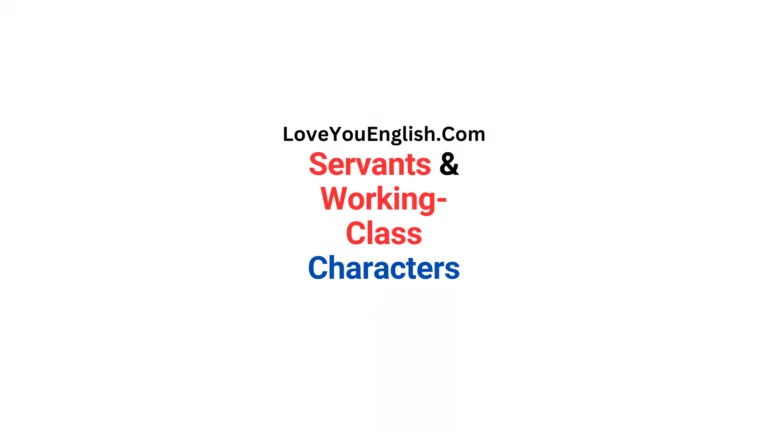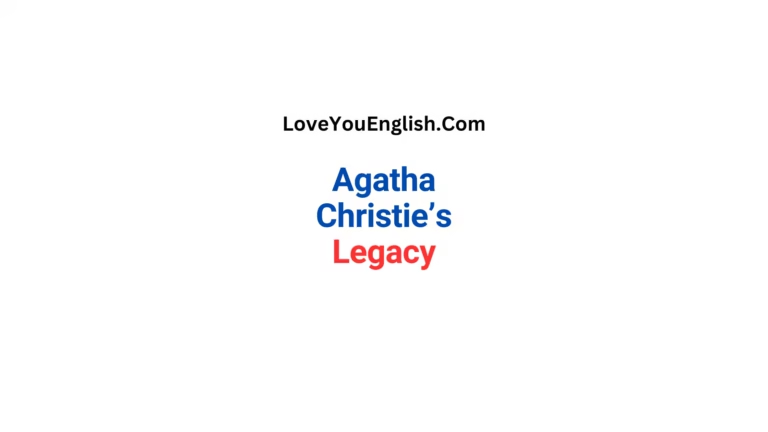Class Struggles in English Literary Works
Sharing is caring!
Class struggles have been a key theme in literature for centuries. Many English literary works focus on the interactions between social classes and the difficulties people face due to their social status. This theme has remained relevant from the 18th century to today, offering insight into how class impacts opportunities, relationships, and life experiences.
In this post, we’ll explore how class struggles are depicted in English literature, focusing on classic and modern works. From Charles Dickens to contemporary authors, these stories highlight the enduring influence of class divisions.
What Is Class Struggle?
Class struggle refers to the conflict between different social groups, particularly the wealthy and the working class. It reveals how a person’s opportunities, experiences, and status are shaped by their economic background. Many authors use this theme to spotlight the hardships faced by the working class and the privileges enjoyed by the wealthy.
Class Struggles in 19th-Century Literature
The 19th century saw the rise of industrialization, which brought significant class divides. Authors like Charles Dickens captured these struggles, portraying the lives of the poor and criticizing the inequalities of Victorian society.
Charles Dickens: Oliver Twist
In Oliver Twist, Dickens tells the story of an orphaned boy raised in a workhouse. The novel reveals the harsh realities faced by the poor, such as exploitation and crime, while contrasting them with the comfort of the wealthy. Dickens highlights how the system traps people in poverty, making it nearly impossible to escape.
Charles Dickens: A Tale of Two Cities
This novel examines class struggle during the French Revolution. Dickens contrasts the luxury of the aristocracy with the suffering of the working class. The story shows how class divides lead to revolution, emphasizing the need for justice and equality.
Class Struggles in Early 20th-Century Literature
In the 20th century, authors took a more political approach to class struggles, linking them to broader issues like economic systems and power dynamics.
George Orwell: Down and Out in Paris and London
This memoir describes Orwell’s firsthand experience of poverty. He details the daily struggles of the poor, from finding work to surviving with dignity. Orwell emphasizes the systemic nature of class struggles, showing how difficult it is for the working class to improve their circumstances.
George Orwell: The Road to Wigan Pier
In this book, Orwell examines the lives of coal miners and factory workers in northern England. He exposes the exploitation of the working class and critiques industrial capitalism. Orwell’s work pushes readers to think about the structural issues that maintain inequality.
Class Struggles in Contemporary Literature
Modern authors continue to explore class struggles, often examining how they intersect with factors like race, gender, and education.
Zadie Smith: White Teeth
In White Teeth, Zadie Smith tells the story of immigrants in London who face challenges related to race and class. The novel shows how colonial history and social structures limit opportunities, highlighting the complexities of identity and upward mobility.
J.K. Rowling: Harry Potter Series
While primarily a fantasy series, Harry Potter addresses themes of class struggle. Families like the Malfoys represent wealth and privilege, while the Weasleys symbolize the working class. The discrimination against Muggle-born wizards reflects societal biases, making the story a metaphor for class-based inequality.
Why Class Struggles Matter in Literature
Literature about class struggles helps readers understand how social and economic forces shape lives. These stories foster empathy for those facing inequality and encourage readers to question the systems of power and privilege in their own societies.
By addressing class struggles, authors not only reflect societal realities but also inspire change. Literature provides a platform for challenging injustices and imagining a more equal world.
Conclusion
Class struggles have been a vital theme in English literature, from the works of Charles Dickens to contemporary authors like Zadie Smith. These stories shed light on the ways class divisions affect individuals and society as a whole.
As readers, exploring these themes helps us better understand the complexities of inequality. Literature invites us to reflect on our role in creating a fairer society, reminding us that storytelling can be a powerful tool for change.
Let us continue to read and learn from these works, as they guide us toward a more just and equitable future.
More topics:
- How to Prepare for an English Literature Exam
- The Role of Nature in Romantic English Poetry
- 10 Famous Literary Quotes and Their Hidden Meanings
- The Importance of Tragedy in English Drama
- The Role of Religion in English Literary Classics
Resources:
- Oxford English Dictionary for Literary Language
https://www.oed.com - Literary Theory and Criticism
https://plato.stanford.edu/entries/literary-theory/ - Public Domain Classics and E-Texts
https://www.gutenberg.org
Sharing is caring!







